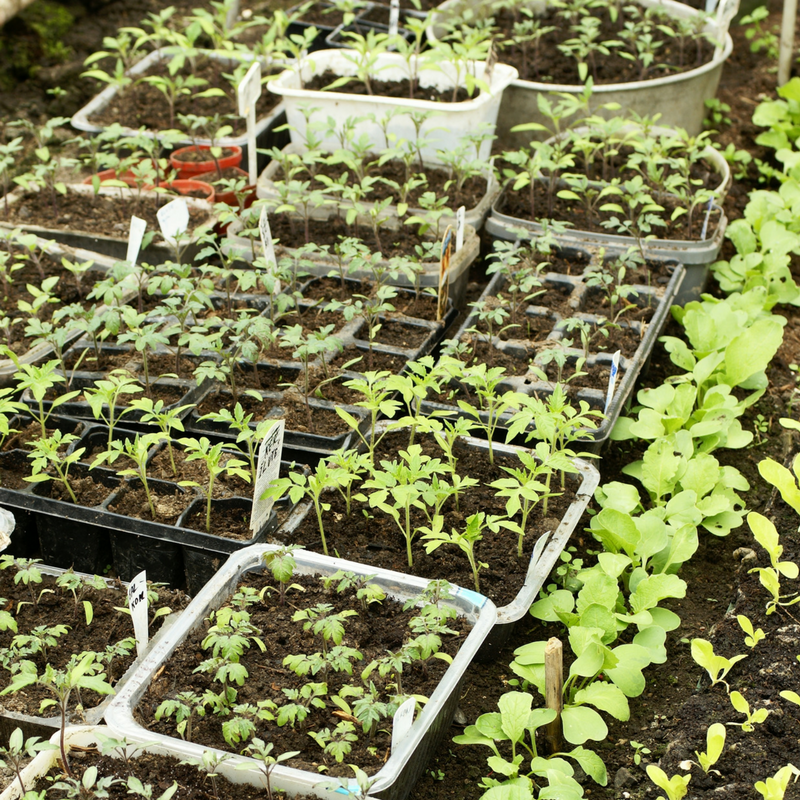Seeds are a great way to get started!

Seeds are a great way to get started!
So as we get excited about Spring finally arriving – buying and planting seeds is a good ‘spring’ activity that you can do when it is still cold out.
A few considerations... the frost free date is the ‘official’ date when the risk of a killing frost is less than 50%… for Ontario we use some old data from the 80’s that might not take into effect the recent climate change issues – but here is a chart that will get you close to the time it is safe to plant out tender flowers and vegetables.
| Barrie | May 26 |
| Hamilton | Apr. 29 |
| Kapuskasing | Jun. 12 |
| Kingston | May 2 |
| Kitchener | May 11 |
| London | May 9 |
| Ottawa | May 6 |
| Owen Sound | May 12 |
| Peterborough | May 18 |
| Sudbury | May 17 |
| Thunder Bay | Jun. 1 |
| Timmins | Jun. 8 |
| Toronto | May 9 |
| Windsor | Apr. 25 |
But we can play with seeds ahead of the frost free dates – both indoors and out in the garden.
Veg and Flower gardens have 2 types of seedling processes – one is for seeds you need to start indoors ahead of putting plants into the garden while the other activity is with seeds you plant directly outdoors into your garden beds.
Plants we start in our greenhouses are the same types of plants you could grow yourself indoors on your windowsill or start under artificial light. Typically we start indoors ahead of the season tomatoes, peppers, eggplants, cucumbers and squashes – all plants that need warm soil and take a long time to fruit. The annual flowers we start ‘indoors’ include begonias, marigolds, alyssum, petunias and other slow to grow flowers.
A few things to know about starting seeds indoors:
1) Clean is key – you need to use ‘sterile’ seedling mix as bacteria and slimy stuff likes warm, humid environment. Do not use garden soil – a ‘soil-less’ or seed-starting mix is best.
2) Light is important – you need a bright windowsill, or strong artificial light from grow lamps to keep young tomato plants from getting too stretchy.
3) High moisture when seeds are germinating and seedling are very small is key, Use a clear plastic greenhouse covers or you can use clear saran wrap – also good to know that after seedlings are an inch or so high to ease back on high humidity to toughen up the small plants to get used to drier air of garden.
4) Do not start seedlings too soon! We all get so excited about spring coming that we plant seeds in dark of winter. Look at your outdoor planting date – then back up from that date time for seeds to germinate then about 3-4 weeks of growing time for peppers/eggplant/tomato – only 2-3 weeks growing time for cucumbers (they grow really fast).
5) Read the packet – all seeds are a little different – some like to be covered – some like light to germinate. Spend a few minutes reading each seed packet and you will have greater success.
6) Start with easy plants – if you have not done this before consider trying some of the easier plants first to get experience and see if seed staring is for you. Good beginner seed items include any cucumber or squash, peppers, tomatoes, marigolds, sunflowers and zinnias. Small seeded and slow growing plants like begonias and petunias are perhaps for more experienced gardeners.
But if you start clean, have enough light and moisture and leave just the right amount of time – chances are you will have great success with indoor sowing.
On to outdoor sowing. The vast majority of veggie crops can be sown directly into the garden. Radish, peas, lettuce, cabbage, beans are the most common. Add into that mix sweet corn, cucumbers & zucchini (for those who chose not to try these two fast growing plants indoors), carrots, beets – – it is a long list.
In early to mid April – you can plant peas, broccoli, cabbage, lettuce and onions. Warm loving crops like peppers and tomatoes need to wait a few more weeks.
- Kristin Ego